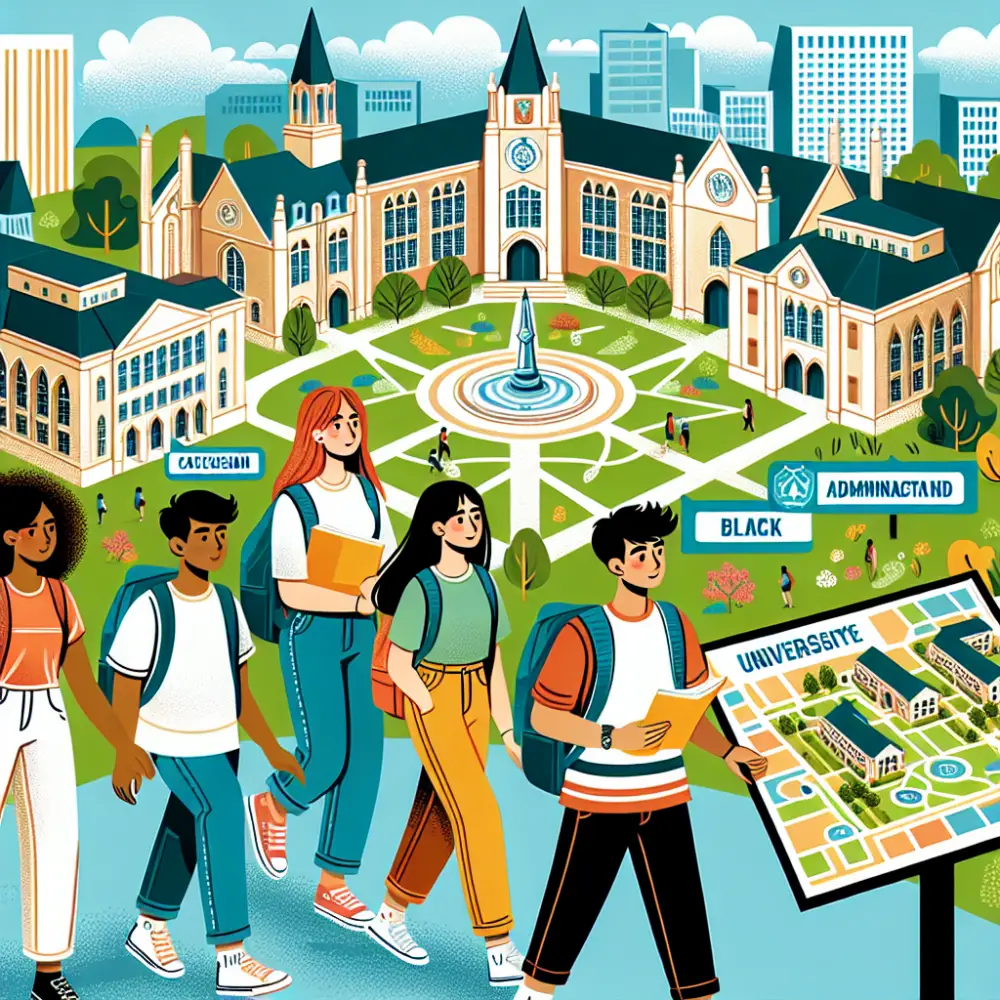
There are many reasons why international students would want to stay in the US after school. However, most students end up not doing it because they don’t know how to exchange a student visa for a green card.
It is for this reason and more that we are writing this article. We’ll help you understand the intricacies and the various steps you need to take to achieve this fit.
This article will carefully explain these steps and how to do them.
In the meantime, below is a table of content that summarizes this article in points.
According to the Migration Policy Institute, about 1.1 million international students were enrolled in US institutions in the 2022 school year (SY).
This marked a decrease of almost 20,000 international students from the previous year, after a decade of steady growth.
Key factors in this decline include the rising cost of higher education in the US, the high number of student visa delays, and denials.
Additionally, the difficult political environment for immigrants under the Trump administration and expanded opportunities to study in other countries contributed to this decline.
How to change your student visa for a green card: Introduction
I have come into contact with many international students, some I met while I was still in college and others later. One thing was easily noticed in all of them, they all enjoyed their time in the States regardless of cultural differences.
Also, many of them are really interested in settling down here after school.
And frankly, the reason for this is not far-fetched. For some, it was the endless possibilities and opportunities in the United States. Meanwhile, others would like to give their children the same opportunity they had, and there is no better way to do that than to fall behind.
However, some have no idea how to change student visas to green cards. They also do not know the necessary requirements to exchange student visas for green cards.
This and more will be discussed in this article, but before that;
What is a student visa?
This is simply a visa that international students must obtain in order to study in the US.
A student visa (F or M) is required to study in the United States. Foreigners cannot study after entering on a visitor visa (B). They are also not allowed to study if they went through the Visa Waiver Program. (VWP) .
However, they will be allowed to do recreational study (non-credit) as part of a sightseeing visit.
The F1 and M1 visa are the most popular of these visas as it has certain benefits. Some of the benefits include allowing international students to work in their first year.
However, you can only work on campus during your first year and in specific programs.
International student visa categories
United States immigration law has four categories of visas for foreign students and exchange visitors:
- F-1 visa for full-time students at an academic institution such as a college, university, or high school, or who are enrolled in a language training program.
- M-1 visa for full-time students at a vocational or non-academic institution.
- F-3 or M-3 visa for citizens of Canada and Mexico traveling to the United States for full or part-time study at an academic (F-3) or vocational (M-3) institution.
- J-1 visa for participants in an educational or cultural exchange program. This visa category includes college and university students, as well as medical doctors, visitors on summer work trips, visiting professors, short-term researchers and scholars, teachers, and au pairs.
Students holding an F-1 visa are authorized for up to 12 months of OPT upon graduation and are eligible for another year of OPT when seeking an additional post-secondary degree at a higher level.
Students with a (STEM) degree are eligible for an OPT extension of up to an additional 24 months.
Immediately after the OPT period ends, graduates must find an employer who is willing to sponsor them for a work visa (such as an H-1B visa) to continue working in the United States.
Spouses and children of foreign students and exchange visitors can enter the country by obtaining an F-2, M-2, or J-2 visa. However, this depends on the visa category of the student or visitor they are accompanying. However, only J-2 holders are eligible to study or work in the United States.
After completing their academic or research programs, international students and exchange visitors may remain in the United States.
This can only be if they are eligible for family- and employer-sponsored green cards, the K-1 visa for fiancé(e) of US citizens, and some nonimmigrant visas.
How to change your student visa to a green card
As an international student living and studying in the US, you may be interested in settling there. Although this involves a tedious series of events, it is doable.
There are numerous ways to accomplish this, it may be a bit of figuring out your best option.
Discover the option that best suits you.
#1. Receive employer sponsorship
If you get a job while you study, you can get your employer to sponsor you. This may also come into play if you get a job after school, but you must be within the 60-day grace period.
This involves asking your employer to file an application for you for an EB-2 or EB-3 employment-based green card.
# 2. Marry a US citizen
Some people find this to be the easiest way to get a green card. However, you must show that your relationship is easy and not a means to secure residency.
The process is quite rigorous and may include interviews, background checks, and examination of the documents you provide to US Citizenship and Immigration Services (USCIS).
So if you think you have what it takes and are in a legitimate relationship, make it official, marry a US citizen!
# 3. Seek asylum
This is another way to get a green card as an international student. However, this option is only open to a certain group of international students. Students whose country is in civil war, those who might be persecuted if they return home for belonging to a particular ethnic group.
If you fall into any of the above categories, you can apply for asylum. We recommend that you consult an immigration attorney about the best way to present your case.
#4. Win the green card lottery
This lottery is held every year from October to November. The Electronic Diversity Visa Lottery is sometimes called a “green card lottery” and is a legitimate way to obtain a green card. However, there is no guarantee that you will get a green card this way.
#5. Receive sponsorship from a family business owner
You can get a green card from a family member who owns a business. They can sponsor you for a green card, however, they will have to show that they are hiring because of your qualifications, rather than because you are related.
They must have a hiring process for the position they would fill and demonstrate that they have made a good faith effort to hire an American candidate, but that none were available or willing to do the job.
# .6 Participate in military service
People are generally not allowed to join the military if they do not have a green card. However, if you have been in college for at least two years, you may be eligible for certain high-demand positions in the military.
And if that’s the case for you, you won’t need a green card. Talk to a recruiter at your campus about this possibility.
# 7. Receive sponsorship from parents or children
If you are a parent or child under the age of 18 and are already a legal US citizen, he or she can sponsor you for your green card.
This is possible if your father has been queuing in the US before you went to study. Or if you had a child during the cause of your study.
While this scenario is not very easy for most international students, it is still a legitimate way to obtain a green card.
# 8. Self-petition
You are already attending college and should be more knowledgeable than other green card applicants. It will not be wrong to assume that you will have skills that the average person or applicant might not have.
For these people who have achieved a lot, the United States has made a specific visa. This is the Green Card for Persons with Extraordinary Ability or EB-1 visa.
The visa is for these groups of people:
- Outstanding professors and researchers,
- persons of extraordinary ability in the arts, sciences, business, athletics, or education, and
- Executive managers who have worked in a foreign branch of a US company during the last 3 years.
So if you think you fall into this category, apply for a green card in this category.
# 10. Become an investor
Investing in the American economy is another way to get a green card. However, you must have a lot of money for this to be possible. This is because you will need to invest no less than $500 thousand to $1 million in a business venture and create more than 10 permanent jobs.
If you can do this, you will be granted the EB-5 Visa. However, there are other criteria that you must meet.
Rights you will have as a green card holder
You have now followed all the necessary steps and have obtained a green card; what right do you enjoy
# 1. Right to permanent residence
With a green card, you can now reside in the United States permanently. This right can be revoked, however, if you break the law or commit certain other actions that make you removable under immigration law.
So be on your best behavior and stay out of trouble.
# 2. Right to work
With a green card, you can work anywhere in the country you choose. However, there are restrictions for highly sensitive positions such as national security and certain elected positions.
# 3. Right to legal protection
This means that the constitution of the United States of America now protects you and all of your rights there.
This includes state and local laws in your jurisdiction.
What this also means is that you can be prosecuted under these laws.
# 4. Right to a driver’s license
Since you got a green card, you also earned the right to own and drive a car, and this cannot be done without a license, i.e. driving.
This does not mean that you cannot own and drive without a green card. Rather, you now have an SSN and can apply for a driver’s license with it.
# 5. Now you can carry weapons
You now have the right to bear arms. However, the laws of your state of residence dictate how to carry and use it.
# 6. Right to travel
You are allowed to travel across the state line or move to another state entirely if the need ever arises.
# 7. Right to apply for visas for immediate relatives
Do you have a wife, husband, or unmarried child under the age of 21? You have the right to apply for a visa for them.
# 8. Right to social security benefits
You are entitled to Social Security benefits that you have earned while working. You are also entitled to other benefit programs, such as Medicare.
Responsibilities You Owe States as a Green Card Holder
With great powers and opportunities come great responsibilities. And in the case of a green card, you have obligations that you must meet to maintain your status. They are the following:
- Responsibility to follow the law
- Responsibility to Register with the Selective Service
- You must file income taxes
- Must support the US government
- Must bring proof of residency status
- Responsibility to notify DHS of address changes
- Responsibility for having health insurance
Conclusion:
There is no doubt that there could be other ways to obtain a green card as an international student, however, we have complied with the easiest of all. While the above procedures will help you obtain a green card, they do come with certain obligations and requirements that you must meet.
Also, when you do eventually get green, you must maintain certain obligations to the states as highlighted above.
Good luck.













Please l want to apply for a junior high school scholarship abroad, in canada or united States of america or any where. Please can you help me.